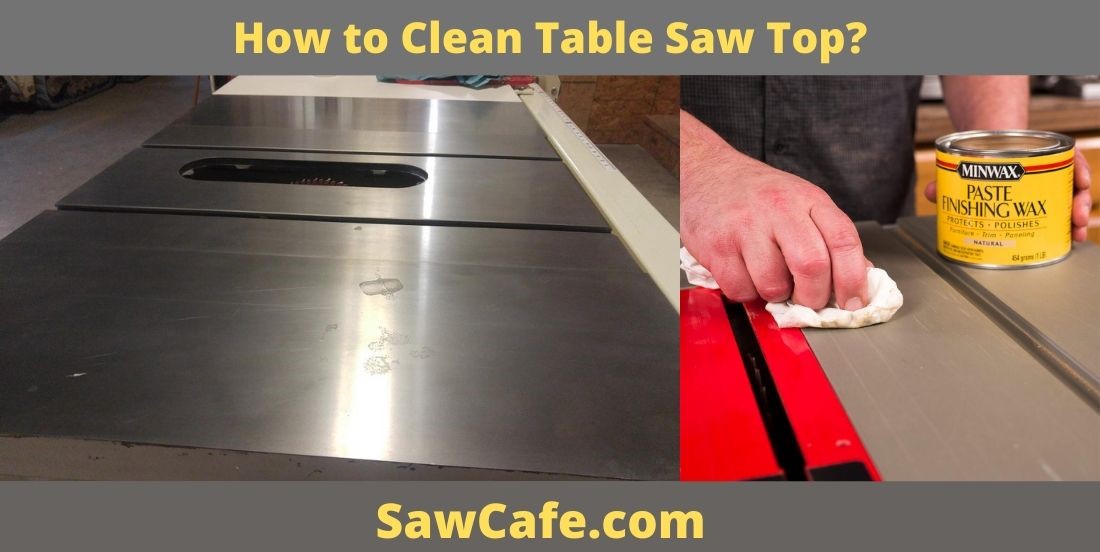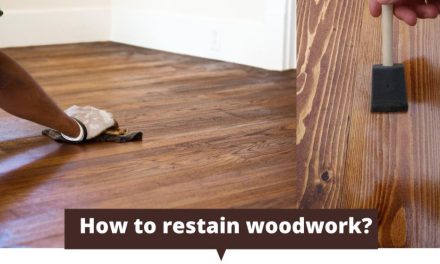It would help if you had to know how to clean a table saw top because of some environmental factors that can cause molds on it. For instance, when you leave the saw unused for some time, humidity can build up, which can cause the table saw top to rust. Another reason why the tabletop easily gets rusted is that everyone usually sets their belongings on it in the workshop, including cold drinks.
People who visit the workshop see the tabletop as the most convenient spot to put their stuff. The accumulation of moisture leads to rusting. When that happens, what do you do? This is what we intend to teach you in this article. We will show you what to do when you are trying to clean your table saw top.
How to Clean Table Saw Top?
When you notice some rust on your table saw top due to lack of use, the first thing to do is to ensure that you remove the rust.
1. Use sandpaper:
The first step is to remove the rust on the table. To do this, you need to sand the table saw top. You need sandpaper to sand the table. 180 to 220-grit sandpaper should be fine for a start. For more convenience, a vibrating sander is advisable. But you do not have to exert pressure when using this equipment. Simply move the sander back and forth on the tabletop while the vibrating machine does its work.
When using a handheld sander, you can observe some tough or old stains not removing. Don’t let that bother you, as long as the table saw top becomes smoother than it was before you began sanding.
2. Use 320-grit sandpaper:
After sanding with the 220-grit sandpaper for some time, you can change the sander to 320-grit sandpaper. This sandpaper will remove the scratches that the previous sander did not remove. The essence of changing to this sander is to make the tabletop much cleaner.
3. Use 600-grit sandpaper:
You have already used both 220 and 320-grit sanders. Now, use the 600-grit sander to add more sleekness to your table saw top. This development will aid a smooth frictional purpose. Your tabletop should look great at this point- the rust, is gone, and the tabletop, is shinier.
4. Apply lubricant:
After sanding your table saw top thoroughly, you can now apply lubricant. If you think that you can still sand the table some more, switch to the 1200-grit sander, and then use your lubricant afterward.
There are two ways to go about this. You either spray the lubricant on the tabletop and wipe with a clean cloth or apply it to a clean cloth and wipe the table with the cloth. Either way, you will get the same effective result.
5. Apply wax to the tabletop:
At this stage, your table saw top should be looking as good as new since you carried out thorough sanding and cleaning. However, you can still make it neater by applying some wax to it. You can use the wood paste finishing wax.
Waxing is the most important method of maintaining the top of your table saw. It is recommended that you do this once in two or three months. Regular use of wax helps to polish and lubricate your table saw. So, your workpieces can slide across easily and smoothly when making cuts.
To lubricate the table saw, apply the wax on a clean cloth. Clean the entire table surface with the cloth. Ensure that the wax reaches all areas that come in contact with the wood stock when the work is in progress.
Wait about ten to fifteen minutes for the wax to dry then use a different cloth to buff it out. So, that’s it. You will discover that your table saw top now looks new and as sleek as it can get.
Another method to clean a table saw top:
The above procedure is the generally recognized means of cleaning a tabletop. In a situation where you don’t have all the sandpapers mentioned, or you want a quicker means, you can adopt this method right below.
1. Scrape the rust:
Some professional woodworkers will call this technique, “knocking down the rust.” Here, you need a scraper tool. Use the tool to scrape the surface of your table saw. Do this lightly so that you won’t leave scratches on the table surface.
You can also use any sandpaper for this. The essence of this is to remove the rust on your tabletop.
2. Apply lubricant:
You can apply a rust remover lubricant to your table. You will find different rust-removing chemicals in the market. Check the functions and choose the most suitable one for the purpose. Leave the lubricant for about fifteen minutes to dry.
It is advisable to read and follow the instructions on the label, as some lubricants can take up to twenty minutes to dry completely. When the stipulated time lapses, get a clean cloth or rag and use it to wipe the grease off the table.
If you notice that your table does not shine as you want, or that there are still traces of rust on the tabletop, you can apply another coating of the lubricant. Ensure that you clean the tabletop after every coating.
3. Apply wax:
We told you earlier that applying wax to your table saw is a great idea. It aids the smooth sliding of your workpieces when making cuts. The role of waxing your table saw top is indescribable. You will understand it much better when you start using it.
FAQs about Cleaning a Table Saw Top:
Q: How often should I clean my table saw top?
A: To maintain the optimal performance of your table saw, it is recommended to clean the top of your saw at least once a month.
Q: What is the best way to clean my table saw top?
A: The best way to clean your table saw top is by using both a vacuum cleaner and a damp cloth. Vacuum any dust or debris from the surface first and follow up with a slightly damp cloth to wipe away any residue. Ensure that you use a non-abrasive cleaning solution when wiping down the top.
Q: Are there any safety precautions I should take while cleaning my table saw top?
A: Yes, it is important to take all necessary safety precautions while cleaning your table saw top. Make sure that the saw is unplugged and the blades have stopped spinning before you begin cleaning. Wear protective gear such as gloves and goggles when handling any harsh chemicals or vacuuming up dust particles.
Q: Is it possible to use a power washer on my table saw top?
A: No, it is not recommended to use a power washer on your table saw top as this could damage the surface and create safety risks. Stick with using a vacuum cleaner and damp cloth for best results.
Q: What should I do if the top of my table saw is still not clean after vacuuming and wiping?
A: If your table saw top is still not clean after vacuuming and wiping, try using a special cleaner designed specifically for wood surfaces. These cleaners usually contain oils that help break down dirt and grime more effectively. Follow the instructions carefully to ensure you are using the cleaner correctly.
Q: Are there any other maintenance tips I should follow when cleaning my table saw top?
A: In addition to regular cleaning, it is important to also use a blade guard while operating your table saw as this will help protect against accidental contact with the blades. You may also want to oil the blades and bearings of your saw every few months to ensure they remain in good working condition. Finally, make sure you store your table saw away from moisture to prevent rusting of any metal components.
Q: Is it necessary to clean underneath my table saw top?
A: Yes, it is important to periodically clean underneath the tabletop as well. This can be done by using a vacuum cleaner with an attachment for getting into tight spaces. Make sure you remove all dust and debris from below before putting the saw back together. This will help avoid potential problems such as overheating or fires caused by a build-up of dust and debris.
Final Verdict:
We hope that you can start cleaning your tabletop now, as we have helped by providing tutorials on how to clean a table saw top without damaging it. We gave you two methods, which are a bit similar. To get the products required for the maintenance of your table saw, you’ll get various online platforms. You will find a variety of cleaning solvents. You will equally get any sander, whether it’s the handheld or the vibrating sander. You can even get an affordable table saw on that platform.



















